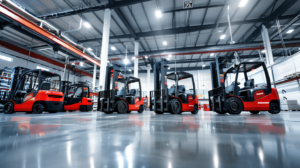Introduction to Rough Terrain Forklifts
In industries where materials must be moved through rugged, uneven, or otherwise difficult environments, standard forklifts often fall short. That’s where rough terrain forklifts come into play. These specialized machines are designed to operate in challenging outdoor conditions, offering unmatched strength, stability, and adaptability. Whether it’s construction, agriculture, or forestry, rough terrain forklifts are indispensable for efficient material handling in tough locations.
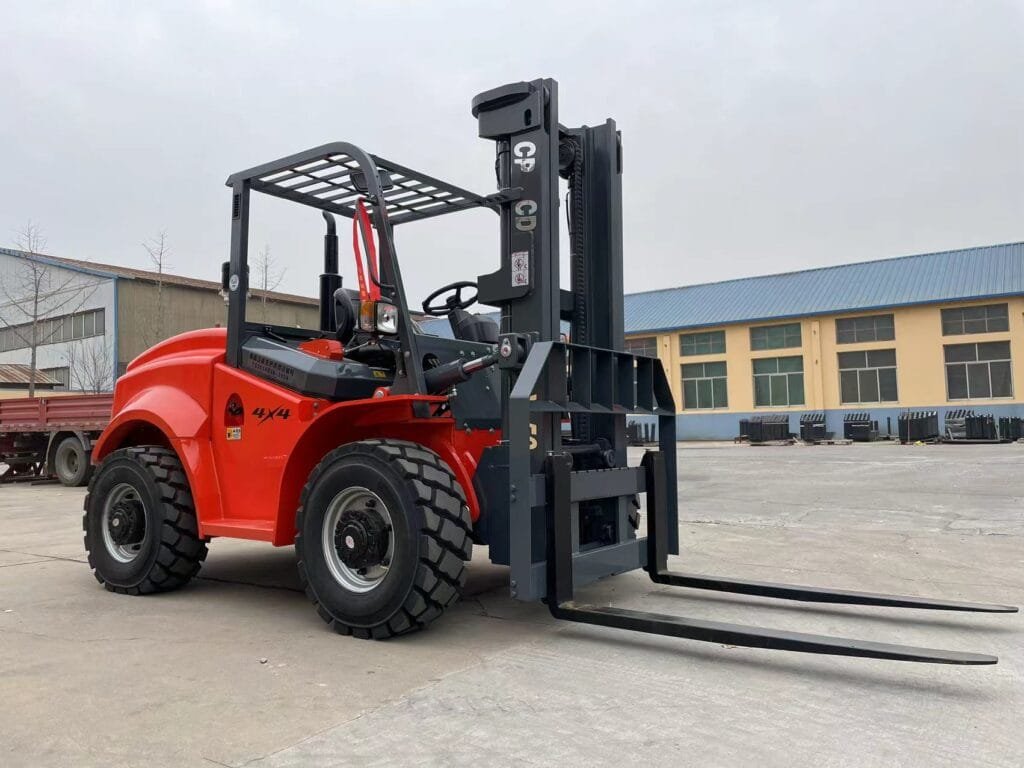
What Makes Rough Terrain Forklifts Unique?
Unlike conventional forklifts that work best on smooth warehouse floors, rough terrain forklifts are engineered for outdoor use. They feature larger pneumatic tires, stronger engines, and enhanced suspension systems, enabling them to traverse mud, gravel, and rocky surfaces without compromising performance.
Types of Rough Terrain Forklifts
- Straight Mast Forklifts – Traditional design with robust tires, ideal for construction sites.
- Telescopic Handlers (Telehandlers) – Equipped with extendable arms for high-reach operations.
- Truck-Mounted Forklifts – Portable solutions often used in logistics and delivery sectors.
Key Benefits of Using Rough Terrain Forklifts
Enhanced Stability on Uneven Ground
Perhaps the most notable advantage is stability. Rough terrain forklifts are specifically built to withstand slopes, bumps, and unpredictable ground conditions.
Wide Tires and Robust Suspension Systems
The wide pneumatic tires provide excellent traction, while the suspension absorbs shocks, ensuring the machine and its load remain steady even in unpredictable landscapes.
Superior Lifting Capacity in Harsh Conditions
Rough terrain forklifts are not just about mobility—they can also lift heavy loads in difficult conditions. Their high-torque engines allow them to carry substantial weight across muddy or sandy ground without losing power.

Increased Safety for Operators
Safety is paramount when handling heavy loads outdoors.
Protective Cabs and Stability Features
Most modern rough terrain forklifts are equipped with ROPS (Roll-Over Protective Structures) and FOPS (Falling Object Protective Structures), ensuring operators are protected against accidents. Features such as load stability systems and hydraulic controls further minimize risks.
Versatility Across Multiple Industries
One of the greatest benefits of these forklifts is their adaptability.
Construction and Mining
They can transport cement blocks, steel beams, and other heavy materials across unstable terrain.
Agriculture and Farming
Rough terrain forklifts are essential for moving hay bales, fertilizer, and equipment across muddy fields.
Forestry and Lumber Yards
From hauling logs to transporting wood pallets, these machines thrive in environments where standard forklifts cannot function.
Efficiency in Material Handling
By reducing the time and effort required to move loads in difficult environments, rough terrain forklifts increase productivity and cut operational costs.
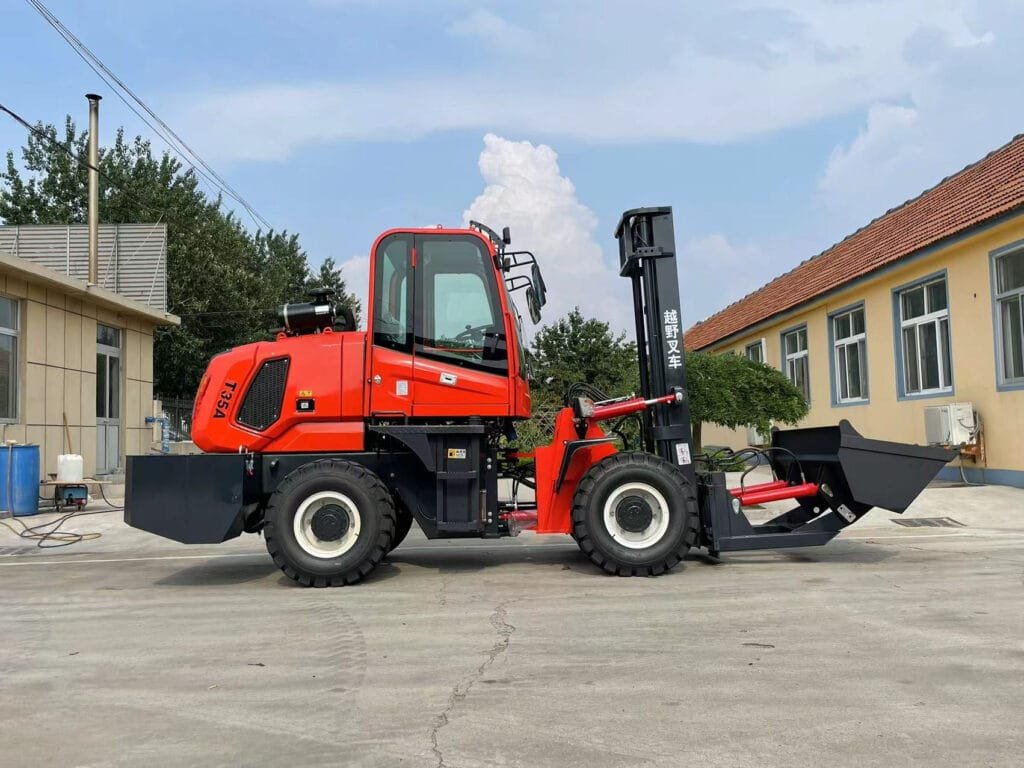
Durability and Long-Term Cost Savings
These forklifts are built to last, often outliving standard forklifts when used outdoors. While the upfront cost may be higher, the reduced maintenance needs and longer lifespan translate into cost efficiency.
Rough Terrain Forklifts in Different Environments
Muddy and Wet Conditions
Their deep-tread tires prevent slipping, allowing them to maintain traction in muddy construction or farm sites.
Rocky and Sloped Landscapes
Engineered for balance, these forklifts maintain load stability even on slopes or uneven rocks.
Remote and Off-Road Locations
For industries like oil and gas, where equipment must be delivered off-road, rough terrain forklifts are often the only viable solution.
Comparing Rough Terrain Forklifts with Standard Forklifts
Maneuverability and Performance
Standard forklifts excel indoors, while rough terrain forklifts dominate outdoors thanks to their off-road handling capabilities.
Maintenance Considerations
While both require upkeep, rough terrain forklifts are designed with heavy-duty parts that handle harsher conditions with fewer breakdowns.
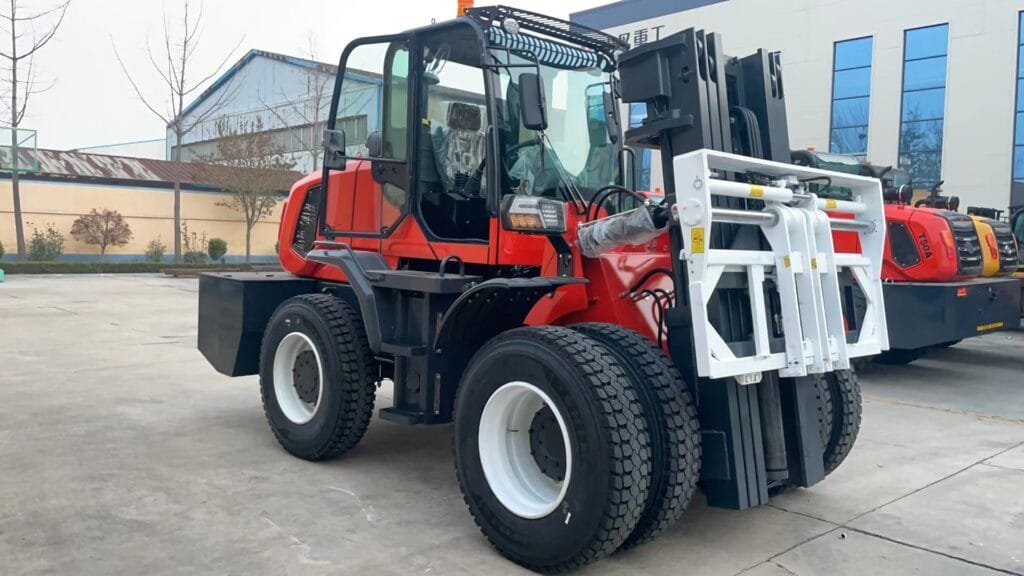
Choosing the Right Rough Terrain Forklift
Key Features to Look For
- Engine power and torque
- Tire type and suspension
- Lifting capacity and reach
- Safety features and operator comfort
Role of Trusted Brands in Decision-Making
When investing in such an essential piece of equipment, choosing a reliable brand is crucial.
Why Nicosail is Worth Considering
Nicosail has earned recognition for producing durable, cost-effective, and operator-friendly forklifts. While not the only option available, Nicosail stands out for balancing performance with affordability—making it a smart choice for businesses that need long-lasting equipment without overspending.
Best Practices for Operating Rough Terrain Forklifts
Training and Certification Requirements
Operators should undergo certified training programs to ensure safe and efficient use.
Regular Maintenance and Safety Checks
Routine inspections of tires, brakes, and hydraulic systems are essential to keep forklifts running smoothly.
Load Management Techniques
Always keep the load low to the ground during transport and avoid exceeding the forklift’s rated capacity.
Real-World Applications and Case Studies
Construction Project Example
A building site required moving heavy steel beams across uneven gravel. A rough terrain forklift handled the task effortlessly, cutting down transport time by 30%.
Agricultural Case Study
Farmers transporting large hay bales across muddy fields found that using rough terrain forklifts reduced labor requirements and minimized damage to materials.
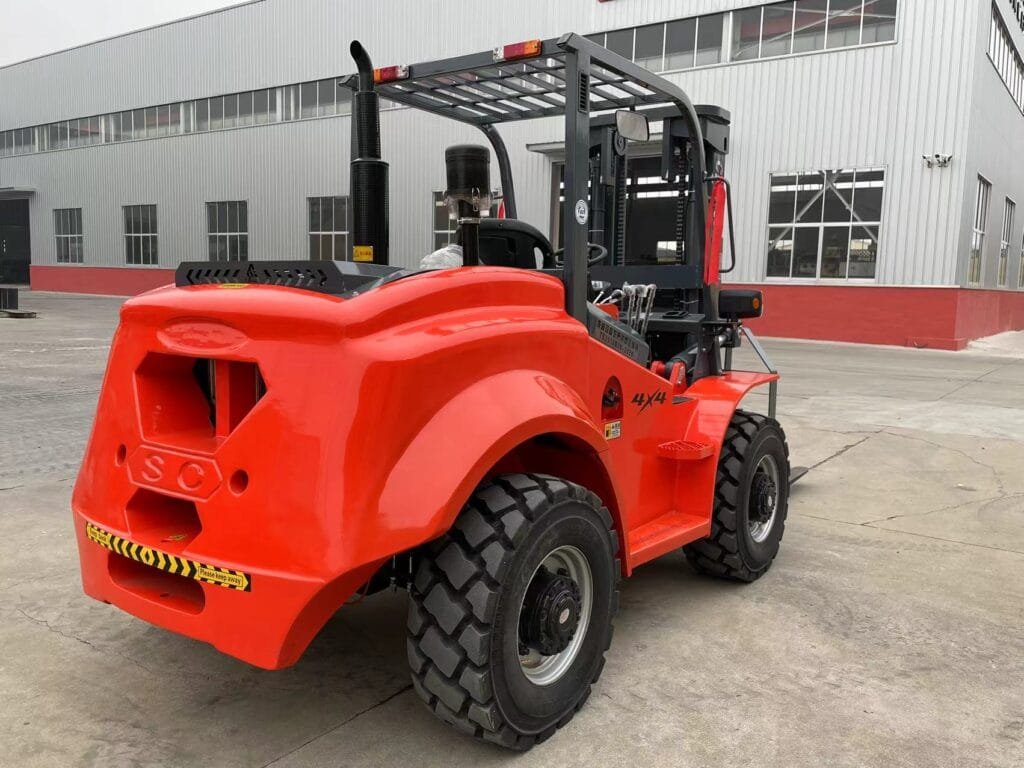
Future of Rough Terrain Forklifts
Integration of Technology and Automation
Smart sensors, GPS tracking, and semi-autonomous features are becoming more common, improving safety and efficiency.
Sustainability and Eco-Friendly Designs
Manufacturers are introducing electric-powered rough terrain forklifts, offering reduced emissions without sacrificing performance.
FAQs About Rough Terrain Forklifts
Q1: What is the main difference between a standard forklift and a rough terrain forklift?
A: Rough terrain forklifts are designed for outdoor use, featuring larger tires and stronger engines for off-road conditions.
Q2: Are rough terrain forklifts expensive to maintain?
A: While initial costs are higher, their durability reduces long-term maintenance expenses.
Q3: Can rough terrain forklifts be used indoors?
A: They can, but their size and tire design make them less practical than standard forklifts for indoor use.
Q4: What industries benefit the most from rough terrain forklifts?
A: Construction, agriculture, mining, and forestry are the top industries that rely heavily on them.
Q5: How do I choose the right brand?
A: Look for reliability, customer support, and durability. Brands like Nicosail are well-regarded in the market.
Q6: Are electric rough terrain forklifts available?
A: Yes, many manufacturers are now developing eco-friendly electric models suitable for rugged environments.
Conclusion
Rough terrain forklifts are indispensable machines for industries that operate in unpredictable and harsh environments. From enhancing safety and stability to boosting efficiency and long-term savings, their advantages are clear. When selecting a forklift, it’s crucial to consider both features and brand reliability. Companies like Nicosail provide practical, durable options that make them a valuable choice in today’s demanding industries.


